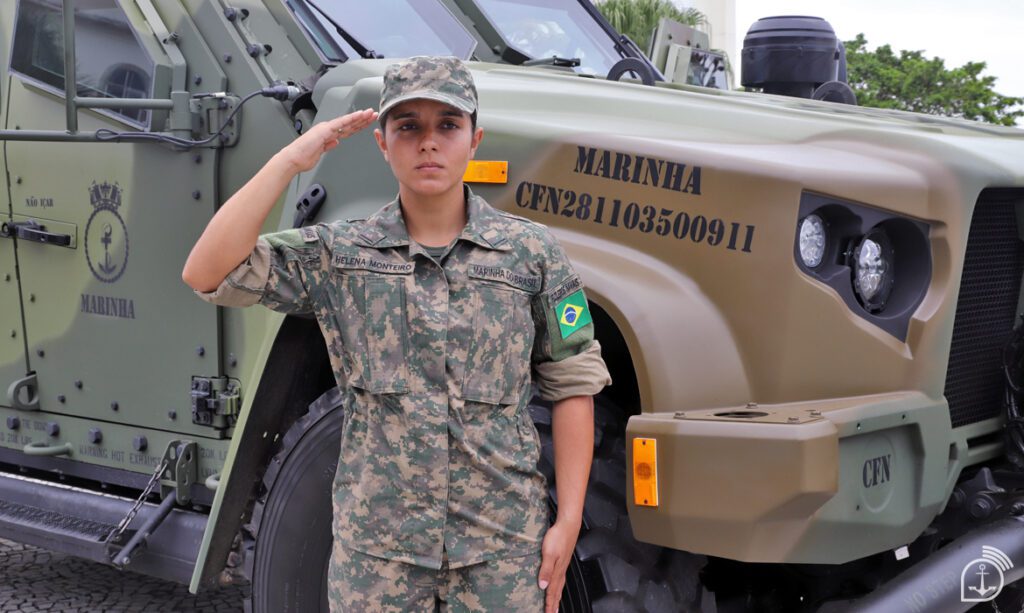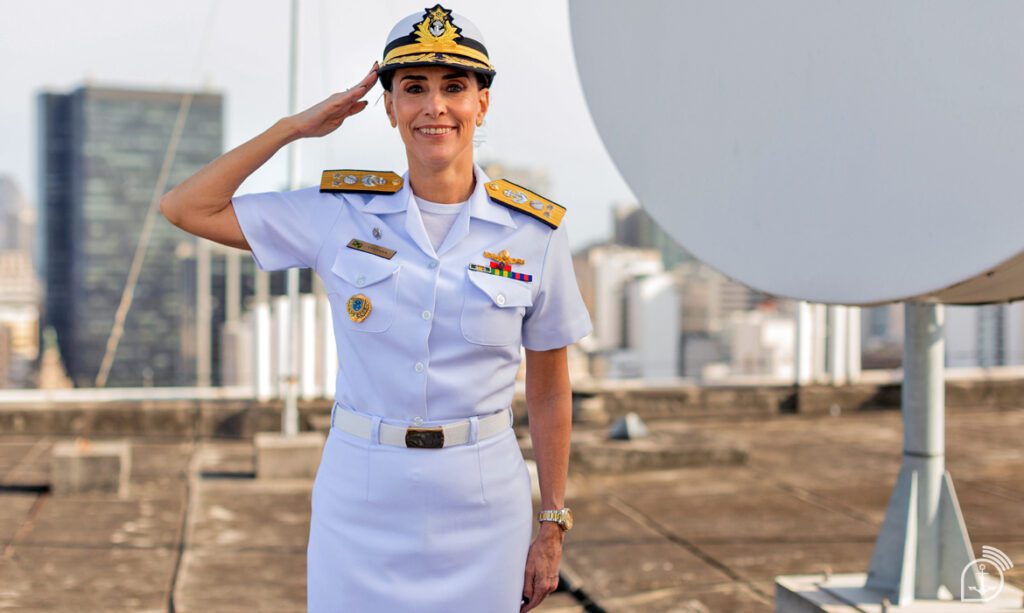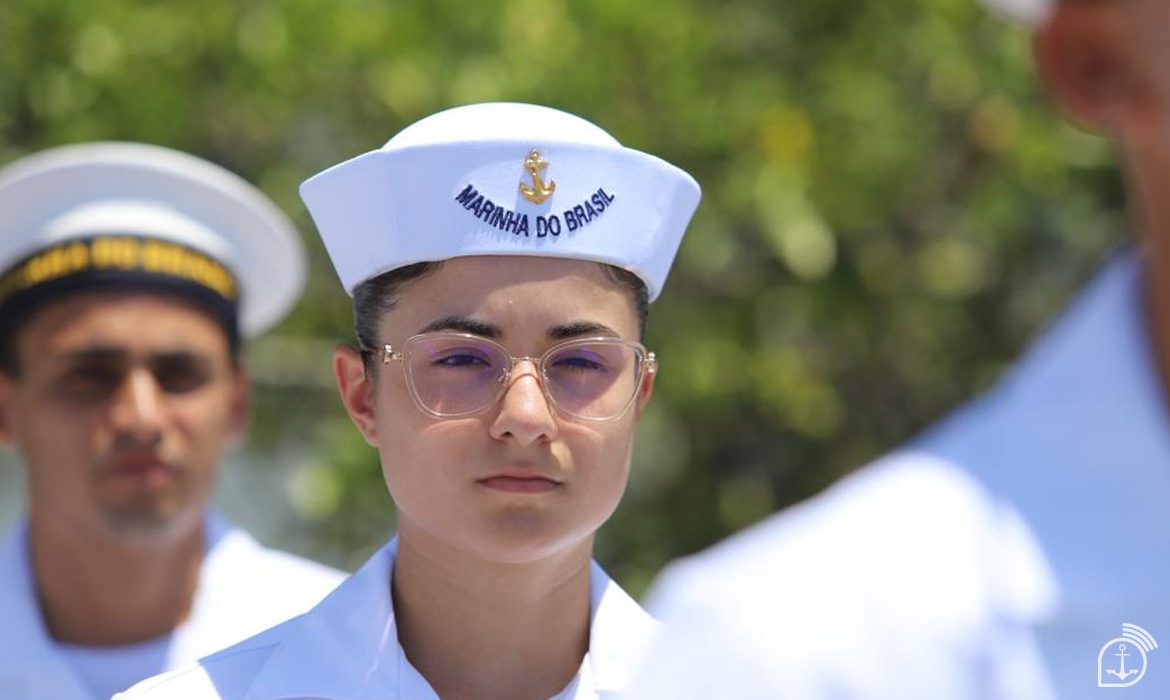By 2024, they will be included in all the Corps, schools and instruction centers of the Force
By First-Lieutenant (RM2-T) Luciana Almeida – Brasília, DF/Brazil
Women are achieving more and more professional achievements in their military careers. In the last ten years, great changes have been made by the Brazilian Navy (MB) to allow women to occupy positions that were traditionally exclusive to men. By 2024 they will be included in all Corps, schools, and instruction centers of the Force.
This year, the first women were admitted to the Apprentice-Marine Corps School in Santa Catarina (EAMSC), the first group of female students at the Naval Academy, and the first time that women will be able to apply to be Marines.
The future sailor, Laila Izabel Gonçalves Lisboa, 19, says that she chose this career because of the influence of her father, who is also in the Brazilian Navy. “My father always talked to me about his work, what he does, and took me to events in the Force. So, living in that environment, it awakened my interest to also be a military man”, he shares.
Now, his goals are to finish the training course and grow in his career. “My expectations are high. I intend to grow professionally, do my best, be a great military person, and always be able to evolve in my career. And for women who want to take the contest, I say that this is an excellent profession, it is a door that has opened for us women. So, have no doubts, study, dedicate yourself, focus, because you are going to make it here,” she encouraged.
At EAMSC, the main changes made to welcome the future military women were the creation of female bathrooms in the main building and in the physics and chemistry labs; the women’s housing, which already existed, was resized, and all the internal rules were reviewed, in order to adapt the school’s routine to this new reality. “Me and my entire crew have been preparing for almost a year so that they, the apprentice candidates, would be received with the best infrastructure and support possible,” explained EAMSC Commander, Frigate Captain André Luiz Vilela de Assis.


At the Naval Academy, 12 candidates were approved in the competition that, for the first time, received women in the High School institution. The entrance of the female students was carefully planned. Some work and services were carried out, such as the creation of a women’s quarters; the installation of security cameras around the quarters; and the adaptation of the infirmary, among other measures.
Recently, the first military graduate from the Naval School, in the Marine Corps, was Marine Helena de Souza Monteiro, who states that the opportunity given by the Force is a source of pride. “My dream was to enter the Naval School, to become a Marine officer. And, when I entered the School, I was able to get to know all the Corps, including the Marine Corps, which is the one I chose. I am very proud to be part of this history,” he said.


History
The pioneering path of women in the Navy was a gradual process, which began in 1980, with the creation of the Women’s Auxiliary Corps of the Navy Reserve. In the 1990s, there was a restructuring of Corps and Boards, which increased the participation of women in management, command and commission positions. In 2012, the first Brazilian servicewoman was promoted to the rank of General Officer of the Armed Forces, Rear Admiral (Physician) Dalva Maria Carvalho Mendes, and, in 2018, ratified with the inclusion of one more servicewoman in the General Officer circle, Rear Admiral (Naval Engineer) Luciana Mascarenhas Da Costa Marroni.
In 2014, 12 young women made history as members of the first class of female aspirants admitted to the Naval Academy, the oldest higher education institution in the country. In 2017, a law granted the opportunity for women to join the Navy and Marine Corps at the Naval School, in addition to the Navy’s Lieutenant Corps, an option that was previously possible. “Belonging to the first class of women to enter the Naval School is a source of great pride, for breaking paradigms and having the important task of opening new doors of opportunities for women, showing their strength and dedication,” says First Lieutenant (Navy Intendant) Maria Carolina Dias Cavalcante Costa, of the class of 2017.
Women can join the Brazilian Navy in the following ways:
- Naval College;
- Marine Apprentice Schools;
- Naval School;
- Private Auxiliary Corps;
- Health Corps: Medical Board, Health Support Board and Dental Surgeon Board;
- Navy Auxiliary Corps: Technical Staff and Naval Chaplains, when religion allows;
- Navy Corps of Engineers;
- Complementary Board of Navy Intendants;
- Voluntary Military Service of Temporary Servicemen – Specialized Seaman;
- Temporary volunteer military service – Corporal;
- Voluntary Military Service for Temporary Officers RM2;
- Voluntary Military Service for Temporary Officers RM3;
- Marine Soldier; and
- Marine Music Sergeant.
Main positions held by women in the Navy


In this trajectory, military women have conquered important positions, such as the positions of Director of Military Organizations, Chief of Detachment of the Oceanographic Post of Trindade Island and Deputy Chief of the Antarctic Station Comandante Ferraz. Women have also participated in the Maritime Task Force in the United Nations Interim Force in Lebanon and in the United Nations Peace Mission in the Central African Republic, which resulted in the award, for two consecutive years, of the United Nations Military Advocate for Gender Equality, for the work done as a military gender advisor. In addition, women make up the crew of the means of the Fleet, the Ships of Hope and the Oceanographic and Polar Support Vessels, in support of scientific research on the Antarctic Continent.
Source: Agência Marinha de Notícias
